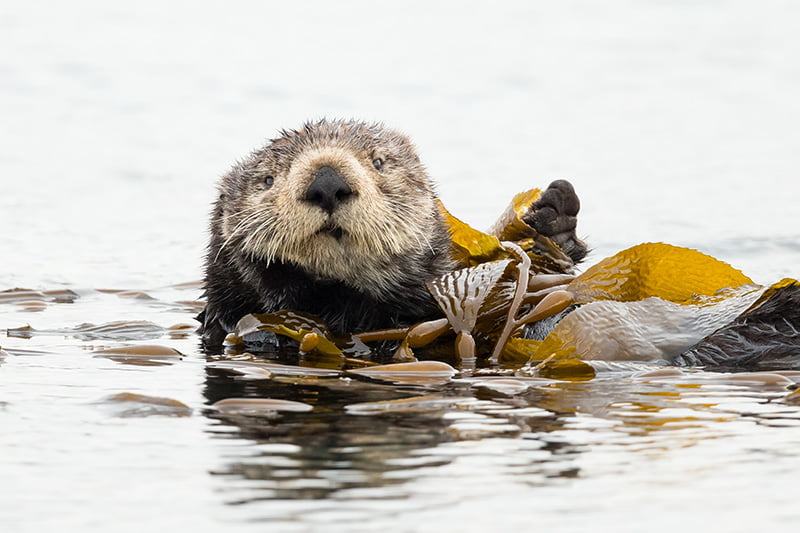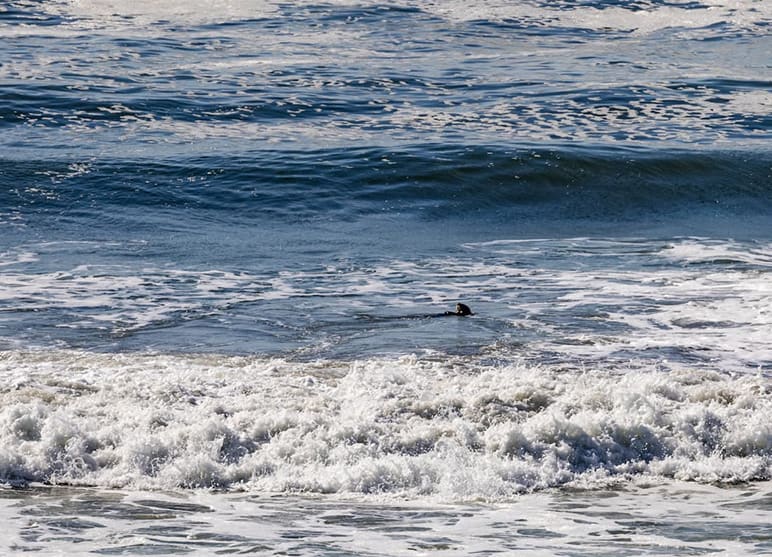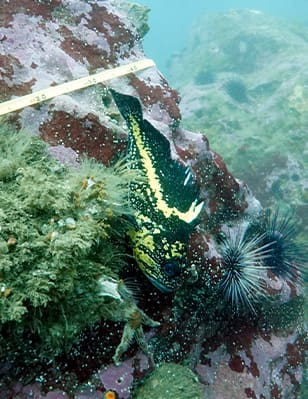By monitoring the populations of key marine animals, Seattle Aquarium researchers can gain important information about the health of entire marine ecosystems. Often, this work involves an age-old task: counting. But as 21st-century marine scientists, we’re making use of new tools, strategies and technologies to do our work. We’re also sharing it widely.
Sea otters

The maritime fur trade nearly hunted sea otters to extinction in the 19th Century. By the time the 1911 International Fur Seal Treaty was signed by Russia, Japan, Great Britain (including Canada) and the United States, a population formerly estimated to be 150,000 to 300,000 had been reduced to 1,000 to 2,000 and was thought to be headed to extinction. Happily, sea otter numbers have since rebounded. Our researchers have monitored their populations for years, with the goal of supporting their ability to thrive in the future.
The Seattle Aquarium Research Program launched in 1995 with a project focused on sea otters and their successful reproduction in human care. Since then, we have contributed to the understanding of sea otter population biology and ecology through multiple studies focused on:
- Population genetics
- Genetic diversity of populations
- Recovery from near extinction as documented by otter numbers and diets




Sea otter census: counting on recovery
Since 2001, Aquarium researchers have participated in an annual sea otter survey documenting the increasing trend of sea otters off our Washington coast. The 2022 official count was close to 3,000 animals.Secrets of the sea otter diet
Since 2010, Seattle Aquarium biologists have been hiking the outer coast of Washington documenting what the sea otters eat. Why? A growing menu can indicate the productivity of the outer coast—or that it’s time to move. When otter diets start to diversify (meaning they eat a variety of foods), the otter population has reached local carrying capacity and needs to expand into new territory.


Rockfish
There are more than 100 species of rockfish around the world, and 24 of those species make their homes in the Pacific Northwest. You can see about 20 species of rockfish at the Seattle Aquarium!
Rockfish have long lifespans, and many don’t begin breeding until they mature at almost 20 years old. Overfishing in the recent past caused declining numbers in some species, including many that have yet to recover. Since 2005, Seattle Aquarium scuba divers have been monitoring rockfish at five sites near Neah Bay, Washington. In 2009, we added nine sites within Puget Sound, Washington.
Our researchers look at how many species are present (diversity) and numbers of fish (abundance), providing data that federal and state fishery managers can use. Our teams also monitor trends in diversity and abundance in light of changes to environmental conditions like temperature, pH (acidity) and dissolved oxygen.
Aquarium divers swim the same 100-meter sections of reef each year and record data using video cameras. This allows our team to verify data and even find new data. Recently our researchers secured data on sea stars from older rockfish footage. This data became important considering the major declines in several sea star species over the past 10 years.
Check out our rockfish data from Puget Sound and Neah Bay.

Hawaiʻi reef fish and corals
The Seattle Aquarium has cared for and shared information about Hawai′i reef fishes and corals since the mid-1980s. Aquarium guests leave with a greater appreciation of these critical ecosystems—and the need to protect them.
In 2009, our conservation work expanded to include monitoring of Hawaiʻi’s coral reef ecosystems. This research—which continues today—advances both our climate resilience and sustainable seas conservation priorities. Its aim is to provide long-term data on the health of fish populations.
Our research questions are:
- Did our unique underwater survey methods (developed in the Pacific Northwest) work well to capture coral reef fish and coral community diversity and abundance changes over time?
- How did coral reef fish communities change after climate events such as marine heatwaves observed in 2014–2015?
To date we have found that both fish and coral communities have changed over time. Fish communities have increased in abundance but become more similar to each other (less diverse). Corals have been negatively impacted by marine heatwaves and have yet to recover.
Read our research papers
Curious to dive deeper into our foundational research? Below are selected academic and professional journal articles we’ve published over the years. (Note that some papers require subscriptions.)
- Rockfish Species Trends in Puget Sound, Washington, USA, 2009–2023 (October 2023).
- Analytical Validation and Assessment of Baseline Fecal Glucocorticoid Metabolites in Northern Sea Otters (Enhydra lutris kenyoni) in Human Care (July 2023)
- Changes in fish assemblages after marine heatwave events in West Hawai‘i Island (October 2022).
- A Unique 100 Meter Underwater Survey Method Documents Changes in Abundance, Richness, and Community Structure of Hawaiʹi Reef Fishes (July 2022).
- Translocations maintain genetic diversity and increase connectivity in sea otters, Enhydra lutris (June 2021).
- Influence of occupation history and habitat on Washington sea otter diet (March 2019).
- Stress-related hormones and genetic diversity in sea otters (Enhydra lutris) (April 2009).
- Noninvasive reproductive steroid hormone estimates from fecal samples of captive female sea otters (Enhydra lutris) (October 2003).
- Microsatellite DNA and Mitochondrial DNA Variation in Remnant and Translocated Sea Otter (Enhydra Lutris) Populations (August 2002).


